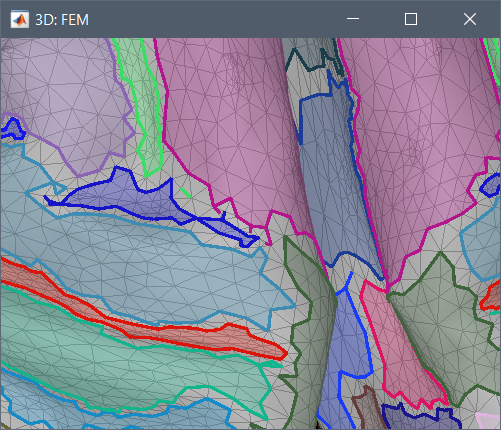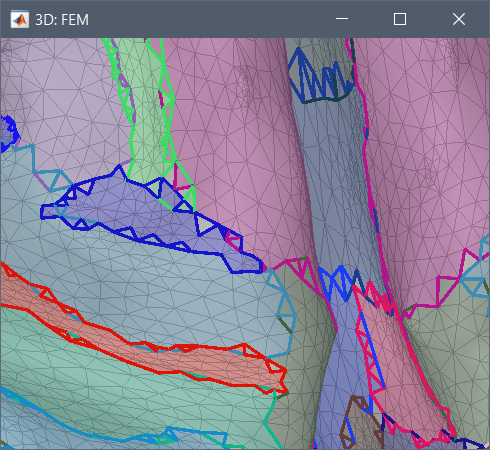Hi Anand,
Indeed, this "issue" has been reported multiple times, for example:
Is it possible to change/eliminate the border between atlas scouts during a cortical parcellation?
Issues with scouts - #6 by Francois
The "scouts" in Brainstorm are not initially aimed to represent cortical parcellations or anatomical atlases.
As designed by Sylvain in the early 2000s: a scout is a list of vertices, manually picked on the cortex surface, possibly overlapping with other scouts, that are used for ROI analyses of the sources estimated on the cortex surface. The signals of the dipoles corresponding to the vertices in one scout can be averaged together to obtain only one signal.
Little by little, I extended these "scouts" to represent anatomical atlases imported from FreeSurfer/BrainVISA/BrainSuite.
The cortical parcellations (ie. textures of the surface mesh, one vertex = one label) are converted to a list of Brainstorm scouts (independent objects, possibly overlapping), but they are in essence different types of objects.
The same apply to volume scouts: https://neuroimage.usc.edu/brainstorm/Tutorials/TutVolSource#Volume_scouts
The main goal of the scouts display, considering the definition above, is to be able to identify which vertex belongs to which scout. The faces of the mesh have no existence in the scouts representation (which are only lists of vertex indices), and no use in our ROI analyses of the sources. The faces are colored only for cosmetic purposes.
I agree that it would be nicer to have 1) the cortical atlases displayed without these gaps, but the priority is to be able to 2) identify which vertices belong to a given scout and to draw scouts manually on the surface by clicking on the vertices to add. You suggested modification addresses 1) but not 2), it makes it difficult to understand where are the separations between scouts.
Left: current display / Right: your suggested modification


The solution would be to extend the boundaries of the scouts not to all the neighboring vertices, but to the centers of the faces connected to the boundary of the scout. This requires a lot of recording, with two aspects: handling the vertices of the scout patches independently from the vertices of the surfaces (they would be a mix of surface vertices and centers of faces), and computation optimizations (drawing the scouts in the current way is ok but slow, adding more computations on the fly could make it too slow).
It's been on my todo list for years, but since this is already fully working, I keep on having more urgent things to fix.
But this can be an interesting project ![]()
Cheers
Francois